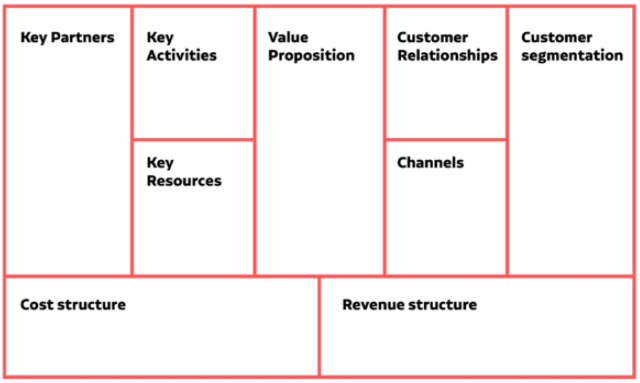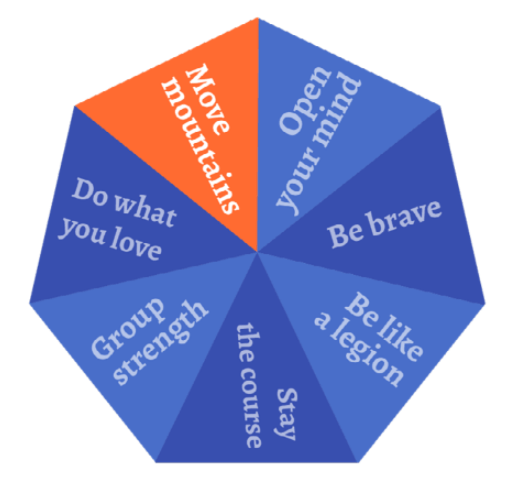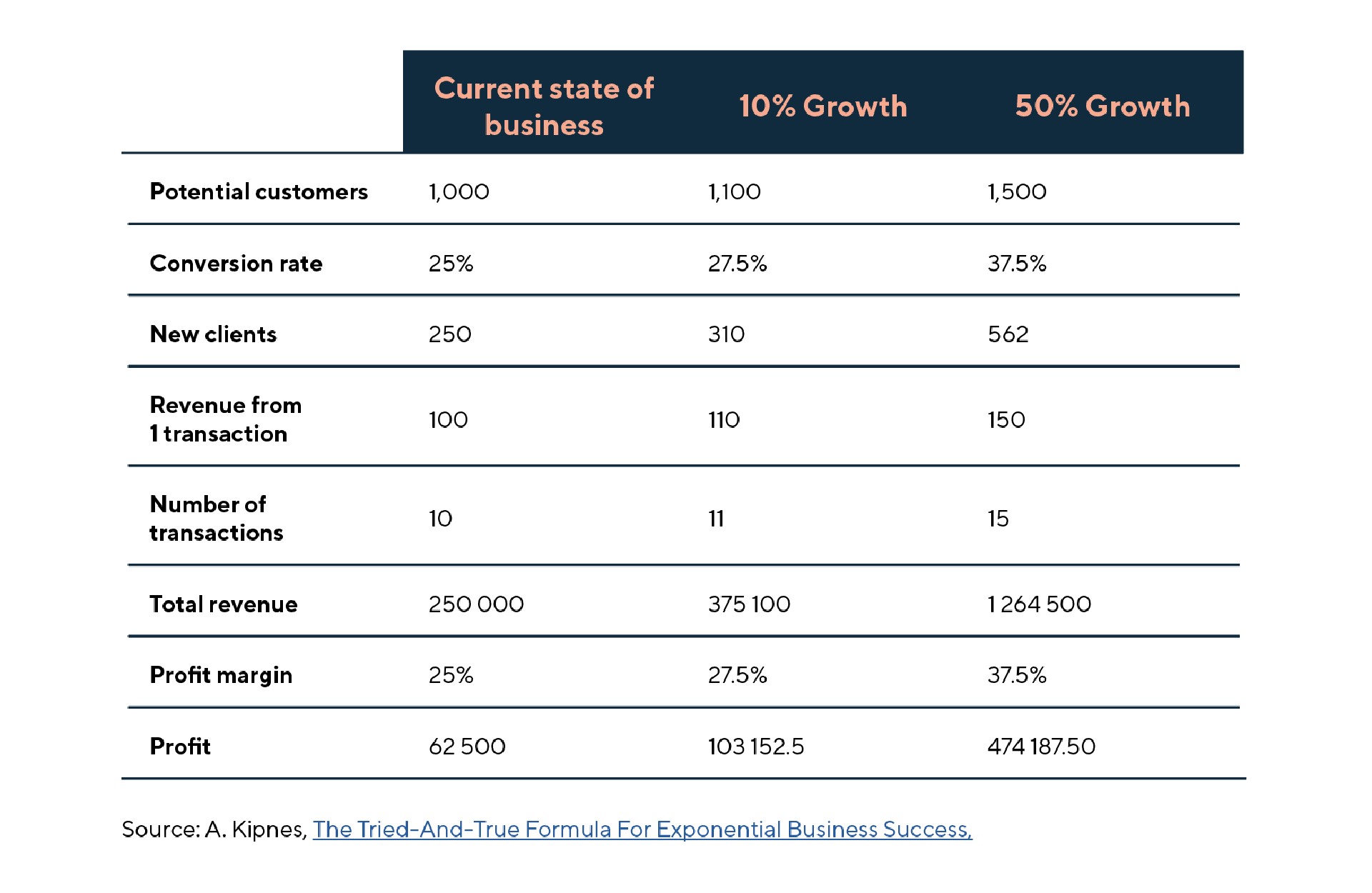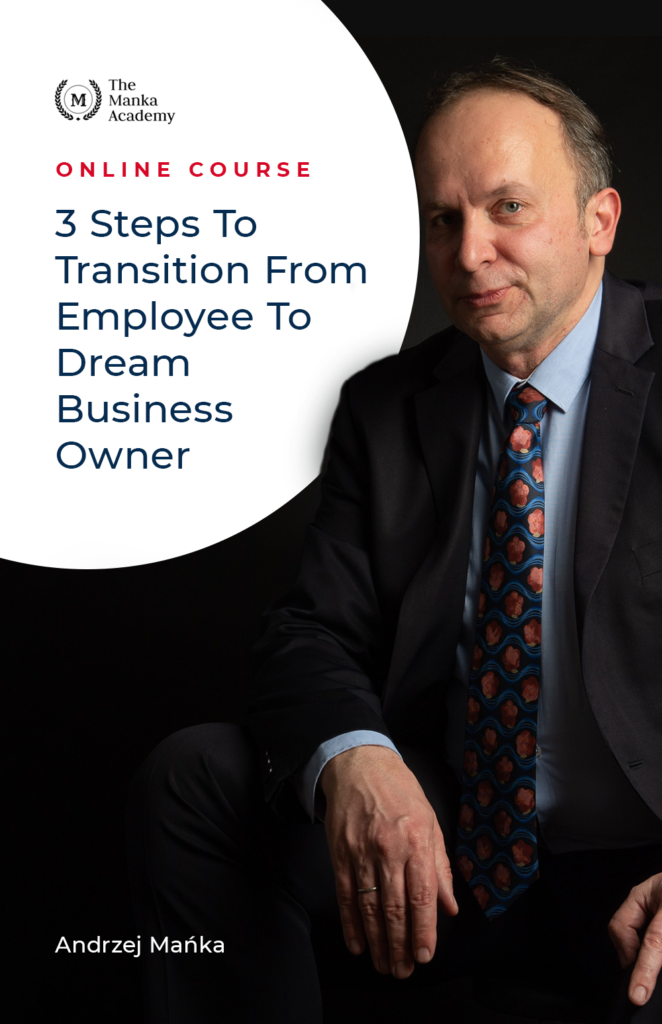12 STEPS To A Profitable Online Business

Categories

Wouldn’t it be just great to create a passive income – a fully automated online business that will bring you 5–6K a month within a few months?
An online business can be your path to financial independence
A fully or substantially automated online technology-based business can also be an investment that yields a higher rate of return than most financial investment vehicles.
Here is a simple example. If you invest EUR 100,000 you will probably get a rate of return of no more than 6 per cent per year. Taking into account inflation, taxes, various fees and commissions (plus possibly your personal costs incurred to take care of everything) 6,000 is probably the maximum profit you can count on.
6,000 divided into 12 months gives EUR 500 per month.
If you start an after-hours business which focuses on creating and selling online courses, you will achieve such financial results after a few months. If you have a small amount of money to start, in the range of EUR 2–3k for the creation of an online system and promotion, you can achieve such a result even in a few weeks.
With constant, systematic and creative work the income from online business can reach the level of six or seven figures.
And, if you plan to share the work and hire a team to run and develop the business, the scale of income will increase accordingly.
Online business will also give you a lot of freedom in choosing where to live. You can work on your projects while traveling around the world, or temporarily relocate according to the season, climate or your current tastes.
You will also be much more resistant to crises and turbulence in the financial markets because online education has become one of the fastest growing industries worldwide. Its value is estimated in hundreds of billions of dollars. The online education market is also booming here in the UK. This country is among the fastest growing markets for e-learning in the world!
How to create and develop such a business?
From my own experience, I know that success in this business (in my case it is online courses and online education) depends on careful application of 12 steps.
STEP 1
Create a customer profile
Business is done with people. Even the fully automated kinds of business. With people and for people. That’s why it’s absolutely crucial to choose the right target audience and understand their likes, lifestyles, successes and failures, deeply hidden fears, and dreams.
So before you start planning your business, make sure you know who you want your customers to be. You can start with demographic data, such as age, gender, occupation, income or place of residence (large cities, small towns, villages, etc.).
If you are going to sell online courses about coding and mobile app development, your target audience will probably be young, male residents of larger urban centers. I’m not saying it has to be this way, because it depends on many other variables, but this might be the initial portrait of your audience.
And yet, it is often the case that it is more important to characterize your potential customers in terms of their goals, life goals, lifestyle or thought patterns. If you have several ebooks about achieving financial independence, it’s not the demographics that will be important, but the interests of your potential readers. You may find that what your audience has in common is that they’ve read books by Kiyosaki and Eker and they read blogs by Martin Lewis in the UK and Get Rich Slowly in the USA. It won’t matter how old they are or how much money they make.
When you know your audience, you will know where to find them and how to convince them. You know how to do marketing and sales. You also see your product from the right perspective.
One of the most effective techniques for studying, understanding and influencing your target audience is to work with profiles of your customers. Customers who may be fictitious, but contain authentic characteristics of your target audience.
PROFILE 1 Lisa

- Age 24–29
- Active on Facebook and LinkedIn
- A full-time employee of a large corporation
- Buys one book a month on average, attends motivational trainings
- Likes cinema and shopping in shopping malls
- Likes special promotions
- Her income is 30% higher than the national average
PROFILE 2 Michael

- Age 45–55
- He actively maintains his profile on Twitter
- Interested in business, politics and sports
- Regularly puts money aside for several purposes – retirement, children, education
- Works in a managerial position but dreams about his own business
- Travels two to three times a year for trips of one to two weeks
- Does most of his shopping online
- Regularly reads several magazines
- In the last year, bought four of your courses online and spent a total of £250
The more profiles you have, the better you will understand your customers and the more effectively you can plan the development of your business.
STEP 2
Apply your best business model
Your business model is how you operate and generate revenue.
In the case of online education, your business model might look like this:
The website is where your customers go. It has a payment system, an e-learning platform, a list of courses and seminars, a blog and a newsletter.
The website is integrated with a system for handling mailing campaigns, such as Mailchimp. Customers are divided into groups according to criteria, such as the product title they purchased, the number of transactions, special promotions and affiliate programs.
There is also a panel for partners who sell your products and third-party authors who provide the products.
Courses and seminars are available separately, in packages and on a subscription model.
The vast majority of the process is fully automated.
Additional premium products include one-on-one coaching and business mentoring (super-premium products).
It is worth regularly reviewing and improving your business model – or rather your models, as you can apply multiple models to your business.
A very useful concept to help you carefully plan your business, develop a precise vision of it and how you can systematically develop it is called the Canvas.
It was created by Alex Osterwalder, a Swiss entrepreneur and business theorist. Like any model, this one has one drawback: it is necessarily static and does not reflect the dynamics of any business development – especially during the generally turbulent start-up period.
However, there are many more advantages, so it is worth applying this model in practice. The situation in which a business finds itself can be presented using nine aspects:

Customer segmentation
Do you intend to attract mass customers? Such customers are generally very diverse, although they may have one common problem that your business solves. This may be, for example, excessive debt, and the solution you offer will be your online course on financial management.
Premium customers, or those who have much higher than average earnings and thus often also quite sophisticated needs, may face the problem of mediocre productivity and a sense of low quality of life. A coaching or mentoring program may be your solution.
Niche customers, i.especially customers interested in a particular product or service, are start-up sales professionals. Their problem is sometimes reaching the right customers. Your product, such as an online workshop, can help them overcome these limitations.
Value proposition
What you offer customers is more than material goods. Rather, it’s value, a promise of the benefits they’ll get if they use your product.
Channels
This is how a company communicates with its customers, and delivers the promised value. It’s also how the customer can buy your product, how it will be delivered, and how you will communicate after the transaction.
Customer relationship
This is how you interact with your customers. This can be in person or through customer service.
Revenue structure
This is how you generate revenue. This could be sales from your online store, monthly or annual subscriptions, advertising revenue or affiliate programs or partnerships with other authors.
Key resources
This is your „gold” – literally and figuratively – your capabilities, your resources, i.e. financial resources, human resources, intellectual property, and technology.
Key activities
These are your day-to-day operational activities by which you maintain contact with customers, provide services and products, and solve their problems.
Key partners
A smoothly functioning and rapidly growing business needs good partners. If you intend to monetize online courses, your partners could be e-learning platforms, customer service platforms, or IT professionals who will take care of the security and development of your website.
Cost structure
You want to make money? Then you have to accept the costs. Your costs are generated mainly by key activities and key partners.
Your business model is the way you operate, and the way you generate money. Your business model is the intricate structure you build day by day to ensure that your business is as productive as possible and that you get great satisfaction from your work. So, already think of your first online course as part of a larger venture.
STEP 3
Take care of the perception
You need to meet several conditions for people to buy from you. They have to know you, like you and trust you.
You can get all this through marketing.
Marketing is the art of image building.
It is extremely important that the perception of you and your business is so good that you start to regularly gather and grow an audience that is interested in what you have to say – and who will want to buy from you.
If you run a small business then your personal brand – your image, how you are perceived and what value system you represent – almost certainly matters a great deal.
Here is a list of important elements that affect your image and the perception of your business:
- A professional and friendly website
- Regular and creative updating of your social media profiles
- Regular blog and video blog
- Good podcasts
- Frequent free webinars and online conferences
Advocate for something important, for some catchy idea and create a clear value system. Focusing on yourself is not productive in the long run. On the other hand, promoting a socially relevant idea that your customers will support brings great results.
Here are examples of such ideas:
- Social equality
- Equal opportunities for every child
- Personal development
- Entrepreneurship
- Rights for minorities
- Caring for the environment
- Achieving ambitious goals
- Productivity
- Automation
- Universal basic income
There can be many, many more ideas like this. Think about what you want to fight for, what is important to you, how you want to be remembered by future generations. And I’m not talking about a kind of “fake value” to attract a wider audience. I mean genuine values; your real beliefs that can enable you to bring a positive change to our broken world.
STEP 4
Plan your keywords and keyword phrases (SEO)
From the very beginning of your business, you need to have a precise vision of what keywords and phrases you want to be found by. You need to know what you want to be associated with. Free advice or elite training, social prestige or popular solutions, basic or advanced level? These and hundreds of other terms determine not only what kind of clients you attract and how much money you make, but they say almost everything about the nature of your business and your brand image.
SEO, or search engine optimization, is your super strategic weapon.
Words have power. They can either create your business or ruin it, or leave it in some unknown, unvisited niche. These words, in your business, are what SEO is all about.
When you create an online business, one of the first things on your list will be your website and blog. And here, before you even write the text or article for your blog, you need to start with SEO.
This is also a great strategic exercise. A kind of “litmus test” showing whether you have thought through your business accurately.
SEO is proof that you know what you want, that you have a coherent plan, that you know what makes you tick, that you’re not jumping from flower to flower.
It is a fascinating, very creative world. A combination of poetry and mathematics.
Here’s what, in a few steps, your content strategy might look like:
- List of planned texts
- List of keywords for these texts and phrases
- Check what are the most popular texts in your industry
- Check what users in your industry are looking for
- Look for the best social media
- Join discussion groups and forums to learn more about the language your potential customers use.
STEP 5
Create a product that fits well with the business
A product is not just a concrete tangible matter, but also the intangible result of marketing stories.
Modern marketing appeals to our emotions and values. Material matters and features are often secondary; perception is key.
Examples include contemporary novels, art, gadgets, healthy food or fashion. In these cases, we rely on the tastes and opinions of reviewers, influencers and fashion dictators.
In modern business, the creative process does not always start with a product or service. It happens to start with… marketing and sales! And only after getting to know the social resonance of our ideas do we get down to the product.
At the beginning it is worth having an idea, concept or strategy. Draft products and their general outline. However, it happens that the final product is a consequence of the analysis and understanding of the market and the business model.
You can start with an idea for an ebook, develop it and eventually create an online multimedia course. Or you might start with an online course and, as a result of the business-model development process, create an online school or mobile app.
In product design and development, it is important to think in two categories:
- Product features – size, functionality, accessibility, aesthetics, storage, durability.
- The benefits of the product – social standing, freedom, safety, health, beauty, wisdom, attractiveness.
The key issue in business is the ability to transform a product into values. In this way we have a chance to influence the imagination and emotions of a potential customer.
STEP 6
Set the price – who is going to pay you and how much?
How much you price your product at is very important. It is a real art. Do you want to have a bigger turnover or would you rather have wealthy customers, i.e. bigger revenue from a single transaction? Do you want to be perceived as a popular kebab stall or an expensive restaurant in the city center? Do you want to be a popular VW golf or would you rather be a Bentley? Both options – popular and luxury brands, and, of course, plenty of intermediate ones – make deep business sense. Either option can make you a fortune. But you need to make a choice and consistently build your business development strategy around the concept of price.
And don’t trade your long-term ambitions for ad hoc, short-term gains.
STEP 7
A professional business starts with sales
Without sales, your business looks like the picture below.

Most think that selling is about convincing a customer, getting them to buy or constantly nagging them.
Not really. This is only 10 percent of the entire sales process.
Persuasion is the final stage. It all starts with selection, with filling the pipelines. And then there’s studying the customer’s mind to know what values, dreams, fears look like in their world.
Case study – selling the course “100 essential questions and answers about your finances and business”. I started selling the course before I even wrote and recorded the first session.
I thought through the whole concept, prepared a sales page and several pricing versions, and then started a marketing campaign.
Pre-sales started in March 2019 and the release was in late May 2019.
By the day I recorded the first session, the course had been bought by 38 people each paying an average of £55. The pre-sale revenue was £2,105. It’s certainly not a staggering result, but it’s good enough to eventually publish the entire course and then release further improved editions.
This method doesn’t always work so well, but it’s worth using, especially in the early stages of business.
STEP 8
Experiment. Frequently and willingly!
Instead of spending time only on laborious business plans – which is also obviously needed – test your hypotheses and assumptions in practice more often.
The concept of MVP and the idea of prototyping are very popular in the start-up world. MVP, or minimum viable product, is the initial version of a product that you can release to the market to see what the reaction of your customers is. By observing the first reactions, level of interest, comments and feedback you can effectively and systematically refine a more mature and commercial version of the product.
Here’s what this looks like in practice for established companies:
- The Facebook for Harvard students (2004) >>> Facebook
- A simple website to promote Brian Chesky and Joe Gebbia’s apartment >>> Airbnb
- Simple mobile app >>> Spotify
- Food booth >>> restaurant
- Maintaining a Facebook profile >>> blog/book
I like the MVP approach and use it often myself.
“100 essential questions and answers about your personal finance and business”. Before I created a professional platform, I shared the course in Google Drive and recorded the videos during webinars in ClickMeeting.
STEP 9
Create a quality control process
So far, we’ve focused on how to move quickly and efficiently. But in the more mature phase of the business, you need solid work on quality, improvement and development.
If you want to not only survive with the business but grow steadily, you need to create customer service procedures, the ways to control quality, clear and quick channels of communication with the customer and to respond to critical comments and objections.
Ask questions to existing customers – both about what they like and what they would like to change, and also what is missing, what disappointed them, etc.
Create a quality control process. If you’re publishing online courses, you may want to hire a team of language editors and proofreaders to read the texts and review all materials before they’re officially published.
Either way, you can set up a monthly or quarterly review process for all or selected material already published.
Also, encourage feedback from clients.
STEP 10
Create a team
If you are writing a philosophical work, a piece of music or an autobiography, you can work alone. This certainly has its advantages.
But if you are an entrepreneur – always work with a team. Surround yourself, from the earliest stages of project development, with specialists.
Even if you prefer to work solo, even if you don’t want to build a real business based on human resources development, decide what kind of work you will outsource and choose your colleagues to help you solve problems and speed up the work.
A team of co-workers, partners or employees is the only way to develop a real business.
It is also a huge challenge, because you have to take care of your own competences in team management, building relationships, emotional intelligence or legal and accounting services (contracts, settlements, etc.).
STEP 11
Develop The HABIT OF WINNING
The winning habit is quite complex and consists of 7 elements.

- Move mountains
The ability to “move mountains” is your belief that what you set out to do is doable. This is an incredibly important part of any project, venture or plan. If you don’t believe you can, then your chances of success are slim.
As Guy Kawasaki, entrepreneur, influencer and one of the most interesting figures in the world of modern marketing put it, “it’s not facts that move mountains but faith.”
Faith is not just a state of mind, it’s also – or perhaps above all – action. When I believe that I can do something, that my idea is feasible, I start working.
And I will not stop until I complete the project. This is faith. If you are a person who tends to doubt and generally looks for holes in everything, I have good news: faith is like a muscle that you can develop with regular exercise.
- Open your mind
The prerequisite for development and the regular achievement of ambitious goals is the constant increase of competence and skills. For this you need an open mind. A mind set on learning.
You need to be humble to maintain an open mind. Shunryu Suzuki, the famous popularizer of Zen in the West, observed that “In the beginner’s mind there are many possibilities; in the expert’s mind there are a few.” Therefore, no matter how much we achieve and how much we expand our knowledge, it is incredibly important to remain in a creative, open and learning state of mind. Especially since knowledge is, to some extent, an illusion. Already in ancient times, the brilliant philosopher Socrates declared the famous “scio me nihil scire”, meaning, I know that I know nothing. This means only that what we know is only a small fraction of what it is possible to know.
And yet our problem, a very common one, is arrogance. Often, after achieving some success, we rest on our laurels and live in the belief that we are great, smart and special. As a result, we look down on others. Yes, each of us is great and smart and special if we don’t allow ourselves to have such weaknesses, but to stay in a growth and learning mode.
- Be brave
Most of the time we don’t even start what we want to do because we lack courage. An interesting property of courage is that it is active and available regardless of our feelings. I can be afraid and yet still act. I can be very afraid and yet I force myself to move forward.
You cannot be courageous if you are not afraid because if you are not afraid, you don’t need courage.
Feelings are important, but our rational mind should be our guide. Good effective decisions are made on a rational rather than an emotional level.
Portuguese author and Nobel Prize winner José Saramago wrote that “The best guardian of the vineyard is the fear of the guardian, so it is always a good idea to overcome the fear first and only then worry about the guardian.”
- Be like a legion
In high school, I was in a humanities class and one of my favorite areas of study was history. I was particularly impressed by the accomplishments of the ancient Greeks. So, when I learned that in 146 BC the Romans finally defeated the Greeks at Battle of Corinth, I began to study Roman martial arts very intensively. I wanted to learn more about those who had conquered my favorites.
The Romans created the most effective army in history. Its essence was great organization, discipline and tactics.
One of the most important characteristics of Roman legions was discipline, an iron discipline.
No matter how good you are at something and how many great talents you have, you must also be disciplined. Have the will to complete the tasks you set for yourself. The strength to overcome your own laziness, fears and doubts.
- Stay the course
You’ve probably been on a plane during turbulence. Despite the difficulties, modern airplanes overcome various obstacles and almost always arrive at their destination. This is due to planning, testing, refining and, finally, sticking to the designated routes. This is a good metaphor for planning our endeavors. It happens, quite often, that we have to deviate from the planned course or change some parameters and coordinates, but it is important to remember the goal. About where we are going.
I love the metaphor of flight in relation to business projects, finance or planning in general. I read about it in Brian Tracy’s Flight Plan. That book is worth a look.
- Group strength
The synchronized, rationally organized, effort of several people brings incomparably more results than working completely alone. Even if you are a poet, philosopher, or artist who is fulfilled in solitude, you still need at least a few trusted people with whom you can share your discoveries and exchange observations and comments.
So make sure you have the right environment. Always confront your plans and ideas with people who have achieved a lot themselves.
On the other hand, if you want to start your own business, don’t ask for advice from colleagues who have always been employed.
I recommend you pay attention to the term “Brain Trust”. It was created during Franklin Roosevelt’s presidency to denote a group of advisors. Roosevelt is the president who led the United States out of the greatest economic crisis in modern history, the Great Depression of the 1930s, and then effectively led during the hellishly difficult times of World War II.
- Do what you love, but make sure you know what love is
There is one dangerous myth that needs to be banished from our way of thinking. It’s the belief that we have to love what we do. We don’t have to! Or, at least, not in the way most of us think.
The idea of “loving what we do” dates back to the 19th century, when Mark Twain declared, “Find a job you enjoy doing, and you will never have to work a day in your life.”
Sounds fantastic, doesn’t it? It is suitable as a popular meme on Facebook, or for a motto to some motivational essay. However, it is not at all easy to translate such a maxim into practical action, into everyday work.
“Do what you love. Love what you do.” – such slogans have been repeated in recent years by millions of people around the world, including such business giants as Steve Jobs. As is usually the case, it all depends on how you define and interpret what you read.
For example, what does “love” mean to you? Perhaps it would be more effective to tell myself that what I do is supposed to be useful to me and others? Is it supposed to benefit us?
Personally, I would suggest using language like that, it’s more practical and understandable in our daily struggles.
Most of us do not particularly love, for example, our rather boring and schematic finances. We tend to have an ambivalent attitude toward money. And this makes it virtually impossible to make more money. This is a serious obstacle to financial freedom.
The solution to this problem is to redefine “love” and “loving”. Remember that love is a decision in the long run, and not a feeling. When you love someone, in the beginning, indeed, the most important thing is that wonderful unique feeling of “being in love.”
But as things progress, it is your decision to love, no matter how difficult it may be or how much it may cost you, that causes the relationship to blossom and bear wonderful fruit.
The greatest successes begin with a proper understanding of what is important to us. And from expanding your language. For, as Ludwig Wittgenstein, the brilliant 20th-century thinker, said, “The limits of my language mean the limits of my world.” Want more from life? Expand your language first.
What kind of attitude you have every day and how you deal with the complexities of life and adversity is the key factor in your success. That’s why you need to take care of your own development.
Here is a list of activities that can help you:
- Cultivate a daily “Hour of Power”, (you can find inspiration for instance in “The Miracle Morning” by Elrod Hall)
- Join public-speaking clubs
- Became Neuro Linguistic Programming (NLP) Practitioner
- Work with a coach
- Run 21K
- Dance
- Read one book a week
STEP 12
Plan and execute your spectacular growth
There are practically no small businesses in the online world. I mean, you can run one, but you generally have the opportunity to grow incredibly fast and spectacularly.
If only you could understand this world.
To understand how relatively easily you can systematically multiply your income and significantly increase the scale of your business, look at this overview.
How can you do this? Here are some simple ideas:
- By injecting cash from an investor
- Partnerships
- Facebook advertising
- SEO campaign
- Better tools
To better understand the importance of continuous growth planning and the tremendous results it brings, analyze the table below.

Source: A. Kipnes, The Tried-And-True Formula For Exponential Business Success
Small, consistent improvements in different areas of your business can bring a huge difference.
This is the essence of any online business, whether local or global: constant, significant growth and increase in business scale. Sometimes a simple decision to start a partnership, invest in advertising, or organize an online event can result in a significant increase in revenue. If you plan for growth on a regular basis (for example, each week you make a list of tasks that can bring in more customers or sales) then, in the long run, you will build a profitable online business regularly increasing your income level.
Concluding remarks
And finally, two more things to keep in mind.
1) As much as 80 percent of success in business and finance is decision-making and action. And 20 percent is thinking and planning.
So set yourself up for action every day. Prepare yourself as you would for a battlefield, a boxing ring. The more ambitious and serious your intentions are, the more obstacles you will have to overcome.
But don’t neglect mindfulness. Regularly, every day, for example, for one hour in the morning or late at night, put everything down and think carefully about what you are doing. Create a long-term vision. Think!
2) Simplify. The more intensively you work on your business and develop it, the more your system and your work will become complicated and sprawling. So review the fruits of your work regularly, and remove all doubtful, unclear or incompatible elements.
Feeling overwhelmed by a seemingly endless list of options and unsure which is right for you? Book an appointment and let’s have a chat! We’ve been where you are, so we perfectly understand the challenges you’re facing. Better still, we have years of experience and can therefore help you to avoid the pitfalls!

